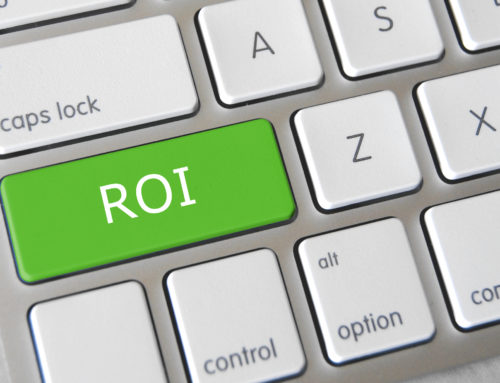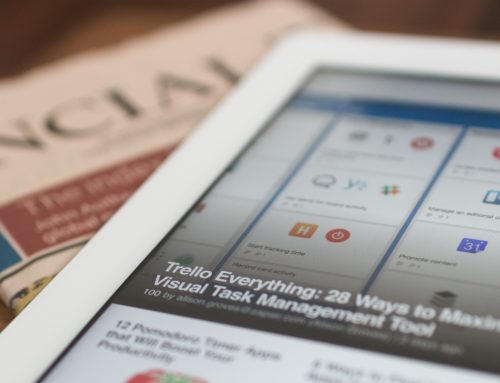 You’ll recall I told you how, when I was in London about a month ago, AMEC unveiled its integrated evaluation framework 2.0 (2.0 added by me) – a really practical way to identify and track the right markers for PR programs and campaigns.
You’ll recall I told you how, when I was in London about a month ago, AMEC unveiled its integrated evaluation framework 2.0 (2.0 added by me) – a really practical way to identify and track the right markers for PR programs and campaigns.
It’s really nifty, so if you haven’t as yet looked at it, please do. The architects of the scorecard – Richard Bagnall, Prof. Jim Macamara and Giles Peddy of Lewis PR – couldn’t have made it more idiot-proof if they’d tried. Really, it’s brilliant.
With that in place, with everyone spouting the “Barcelona Principles” as if they carried them around in their handbags and man-bags, with the number of vendors, agency leaders and thought leaders alike decrying AVE (ad value equivalency) as a valid metric for PR …
… people – especially those at large organizations and corporations – are STILL using AVE.
Sometimes sheepishly, because they know that AVEs don’t really give you any insights that are useful from a strategic point of view.
Sometimes adamantly, because they feel that when AVEs go up – or their equivalent (ha!), such as “EMV” (earned media value, which is basically AVE for the influencer marketing space) – they actually see more sales.
But always – always – because their boss, or boss’s boss, or whoever it is reporting to the CMO and/or CEO wants to know the “ROI” of their efforts, and AVE/EMV/whatevershityouwanttocallit at least slap a dollar number on at least part of those efforts.
I know this because:
a) I’ve had several inquiries over the last few weeks on how I can help some pretty large organizations revamp their strategies with a particular emphasis on better measurement, and I’ve heard the above; and
b) I’m pretty entrenched in the influencer marketing space from an education and training point of view, and the buzz around EMVs is louder than the cicadas that have yet to take over my backyard and drive Lola crazy.
So, when you have a scenario where you know that AVEs/EMVs are rubbish, yet you still have to use them to justify your budget and/or your job, what do you do?
How do you start to soothe your panicky conscience that is having an anxiety attack over being pulled into the AVE graveyard despite its best efforts, and start to complement your meaningful work with equally meaningful metrics?
4 steps to start refocusing PR measurement on metrics that matter
1. Stop fighting AVEs… for now.
If your boss/CMO/CEO has her/his heart set on it, it’s pretty pointless to try and wean them off of it … UNTIL you’re able to confidently offer an alternative that showcases your efforts vis-a-vis business goals and revenue.
Now, note that I didn’t say, “Start USING AVEs.”
I said, “Stop FIGHTING them… for now.”
Those numbers are going to show up in your reports anyway, as all the major vendors still provide them (precisely because people still ask for them, hello Chicken, meet Egg).
So leave it be for now.
2. Identify a specific timeframe or phase of your program/campaign for which you are going to set up a supplementary measurement program – on your own time, if need be. Then figure out what specifically you’re going to track.
For example, say you have a product launch coming up. You’ve been told to get “buzz” (that old favorite of marketers) and awareness… ultimately I would assume resulting in leads, or sales.
Your old (ok, current) metrics will be looking at the AVE or EMV of your Social PR activity, influencer activity, etc… which really won’t tell you anything (but we’ve already established that!).
Your NEW, test program is going to try and capture what is actually happening, so that you can start to pull insights.
And part of that means knowing what you’re shooting for. You know my mantra: begin at the end, and work backwards from there.
So, for example, you might want to place X story in ___ # of outlets, which have been clearly identified ahead of time. You want ____ influencers to engage in some way with your launch, and that “some way” is probably numerous ways, which you’ll have to get specific about.
All of this is most likely part of your plan anyway, so it’s just a question of making sure you’re really specific about what kinds of outputs and engagements you’re trying to generate.
If you go through the Academy of Influencer Marketing that I created for Traackr, you’ll learn more about this.
Note how I said “on your own time, if need be” above? More on that below.
3. Set up a system to track your internal activity.
You will ALSO set up a system to track the outbound efforts of your team – in traditional PR terms we call these “inputs” – so that you can start to learn how much effort it takes to generate the awareness you’re looking for.
It really doesn’t have to be complicated; use an Excel (or Google) spreadsheet if you need to, or use the tracking and reporting capabilities that so many different PR software platforms provide these days.
So you’re going to track things like: how many emails/phone calls/whatever does it take to place “X” story? To get “Y” influencer to do “Z”?
I must give a huge shout-out to Pierre-Loic Assayag of Traackr (off-and-on client, and always-on friend) for helping me crystallize these thoughts as I worked on AIM with Traackr. As I did, I realized I always focused on internal efficiencies, but getting this specific ultimately makes a huge difference in the long run.
The Xs and Ys and Zs should already be clearly outlined in your strategy, as part of your goals; that’s why you have to do #2 above before you get to this next phase.
4. Set up and incorporate tracking links, Goals, and Campaigns into your work.
Almost always these days, when there is any kind of launch, there will be a dedicated microsite, or a landing page, or something similar, to which you’re tasked with driving traffic.
Create tracking links generated via Google Analytics’ URL builder (free, and I’ve been talking about the need for PR to do this for a looong time) for each category of “media” you’re going to be working with.
So, for example, if your strategy includes media relations, general social media, influencer outreach, and paid media, you’ll create a set of tracking links for EACH of these types of media.
You’ll then use these links as opposed to generic bit.ly links when you’re sharing links in social media, give them out to influencers, etc. And yes, you can try to get journalists to use them in their reporting as well; it’s usually a matter of asking very nicely, and tactfully, at the right time.
Part 2 to this setting up of links is actually setting up goals and campaigns in Google Analytics. If you don’t have access to your analytics but your web/digital people do, ask them to help.
If they’re not willing to help, or you don’t feel comfortable asking them, then you have a whole other set of problems besides which crappy PR measurement becomes totally unimportant.
But this is the part that you might have to do on your own time, if you can’t find someone to help you. But trust me, it’s not hard, once you get over how scary this stuff sounds. I go through this in my Social PR Virtuoso Master Course, btw.
But what setting up goals and campaigns in GA does is, it lets you see if specific actions were taken, resulting in a goal being “completed.” This could be reaching a specific URL, for example; if that’s set as your goal, and GA shows it as complete, you know they actually got there.
And because you’ll have set up your tracking links via Campaigns, you’ll be able to tell how they got there.
This is not going to be 100% accurate – because not everyone’s going to use your tracking URLs perfectly every time, they might forget (or simply ignore you) – but at least it will start to give you a sense of what’s happening with each type of media.
So those are the first four steps in starting to refocus your measurement efforts on metrics that matter.
I’m going to move this forward next week in Part II, I promise, but first I wanted to give you the basics that you’ll need to get your head around.
Also, if you have questions about the above at this point – or what you want me to cover next week – now is the time to let me know via a comment below. Deal?
Image: João Silas via Unsplash, CC Zero


![[EVENT]: PR Hacks for Small Biz (online)](https://shonaliburke.com/wp-content/uploads/2021/06/FB-Ad-1200x800-01-01-01-Copy-500x383.jpeg)






[…] to start to understand the buyer’s journey from your influencer’s post to your website. Then utilize Google Analytics to understand the effectiveness of your […]
[…] week I walked you through the first four steps (IMHO) on refocusing your measurement efforts on metrics that matter. And one of the points I made was […]
“If your boss/CMO/CEO has her/his heart set on it, it’s pretty pointless to try and wean them off of it ” – Fight with your client on taking off AVE if you want to lose the account – They want meaningless give them meaningless. – #AdviseFirst #ThePayComesAtTheEnd
Ha, I love those hashtags, Philip! Maybe we could also say #thejobcomesfirst…? ;)
Very practical, Shonali. If you’d boss insists on AVEs, you’d be crazy to lose your job over the fight. But a plan to migrate away from AVEs with a common sense alternative, makes sense for everyone.
Totally agree, Mark. And I appreciate you stopping by, it’s a rare and precious sighting here on WUL! ;)